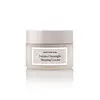What's inside
What's inside
 Key Ingredients
Key Ingredients

 Benefits
Benefits

 Concerns
Concerns

No concerns
 Ingredients Side-by-side
Ingredients Side-by-side

Water
Skin ConditioningAloe Barbadensis Leaf Juice
Skin ConditioningSimmondsia Chinensis Seed Oil
EmollientPentylene Glycol
Skin ConditioningCapryloyl Glycerin/Sebacic Acid Copolymer
Skin ConditioningDimethicone
EmollientGlycerin
HumectantMaris Aqua
HumectantPolyacrylate Crosspolymer-11
Emulsion StabilisingDistarch Phosphate
AbsorbentPotassium Azeloyl Diglycinate
Skin ConditioningAllantoin
Skin ConditioningHydrolyzed Hyaluronic Acid
HumectantSaccharide Isomerate
HumectantCaprylyl Glycol
EmollientSodium Citrate
BufferingCarbomer
Emulsion StabilisingSodium Gluconate
Skin ConditioningCitric Acid
BufferingSodium Hydroxide
BufferingPhenoxyethanol
PreservativeWater, Aloe Barbadensis Leaf Juice, Simmondsia Chinensis Seed Oil, Pentylene Glycol, Capryloyl Glycerin/Sebacic Acid Copolymer, Dimethicone, Glycerin, Maris Aqua, Polyacrylate Crosspolymer-11, Distarch Phosphate, Potassium Azeloyl Diglycinate, Allantoin, Hydrolyzed Hyaluronic Acid, Saccharide Isomerate, Caprylyl Glycol, Sodium Citrate, Carbomer, Sodium Gluconate, Citric Acid, Sodium Hydroxide, Phenoxyethanol
Water
Skin ConditioningCaprylic/Capric Triglyceride
MaskingGlycerin
HumectantCaprylic/Capric/Myristic/Stearic Triglyceride
EmollientCetearyl Alcohol
EmollientSqualane
EmollientPropanediol
SolventGlyceryl Stearate
EmollientPolymethyl Methacrylate
Terminalia Ferdinandiana Fruit Extract
AntioxidantAmmonium Acryloyldimethyltaurate/Vp Copolymer
Caprylyl Glycol
EmollientAcrylates/C10-30 Alkyl Acrylate Crosspolymer
Emulsion StabilisingPhospholipids
Skin ConditioningSodium Hydroxide
BufferingTremella Fuciformis Sporocarp Extract
AntioxidantHyaluronic Acid
HumectantSphingolipids
EmollientSodium Dehydroacetate
PreservativePhenoxyethanol
PreservativeBetaine
HumectantHoney
HumectantPotassium Sorbate
PreservativePolysorbate 20
EmulsifyingHexylene Glycol
EmulsifyingWater, Caprylic/Capric Triglyceride, Glycerin, Caprylic/Capric/Myristic/Stearic Triglyceride, Cetearyl Alcohol, Squalane, Propanediol, Glyceryl Stearate, Polymethyl Methacrylate, Terminalia Ferdinandiana Fruit Extract, Ammonium Acryloyldimethyltaurate/Vp Copolymer, Caprylyl Glycol, Acrylates/C10-30 Alkyl Acrylate Crosspolymer, Phospholipids, Sodium Hydroxide, Tremella Fuciformis Sporocarp Extract, Hyaluronic Acid, Sphingolipids, Sodium Dehydroacetate, Phenoxyethanol, Betaine, Honey, Potassium Sorbate, Polysorbate 20, Hexylene Glycol
 Reviews
Reviews

Ingredients Explained
These ingredients are found in both products.
Ingredients higher up in an ingredient list are typically present in a larger amount.
Caprylyl Glycol is a humectant and emollient, meaning it attracts and preserves moisture.
It is a common ingredient in many products, especially those designed to hydrate skin. The primary benefits are retaining moisture, skin softening, and promoting a healthy skin barrier.
Though Caprylyl Glycol is an alcohol derived from fatty acids, it is not the kind that can dry out skin.
This ingredient is also used as a preservative to extend the life of products. It has slight antimicrobial properties.
Learn more about Caprylyl GlycolGlycerin is already naturally found in your skin. It helps moisturize and protect your skin.
A study from 2016 found glycerin to be more effective as a humectant than AHAs and hyaluronic acid.
As a humectant, it helps the skin stay hydrated by pulling moisture to your skin. The low molecular weight of glycerin allows it to pull moisture into the deeper layers of your skin.
Hydrated skin improves your skin barrier; Your skin barrier helps protect against irritants and bacteria.
Glycerin has also been found to have antimicrobial and antiviral properties. Due to these properties, glycerin is often used in wound and burn treatments.
In cosmetics, glycerin is usually derived from plants such as soybean or palm. However, it can also be sourced from animals, such as tallow or animal fat.
This ingredient is organic, colorless, odorless, and non-toxic.
Glycerin is the name for this ingredient in American English. British English uses Glycerol/Glycerine.
Learn more about GlycerinPhenoxyethanol is a preservative that has germicide, antimicrobial, and aromatic properties. Studies show that phenoxyethanol can prevent microbial growth. By itself, it has a scent that is similar to that of a rose.
It's often used in formulations along with Caprylyl Glycol to preserve the shelf life of products.
Sodium Hydroxide is also known as lye or caustic soda. It is used to adjust the pH of products; many ingredients require a specific pH to be effective.
In small amounts, sodium hydroxide is considered safe to use. However, large amounts may cause chemical burns due to its high alkaline.
Your skin has a natural pH and acid mantle. This acid mantle helps prevent harmful bacteria from breaking through. The acid mantle also helps keep your skin hydrated.
"Alkaline" refers to a high pH level. A low pH level would be considered acidic.
Learn more about Sodium HydroxideWater. It's the most common cosmetic ingredient of all. You'll usually see it at the top of ingredient lists, meaning that it makes up the largest part of the product.
So why is it so popular? Water most often acts as a solvent - this means that it helps dissolve other ingredients into the formulation.
You'll also recognize water as that liquid we all need to stay alive. If you see this, drink a glass of water. Stay hydrated!
Learn more about Water